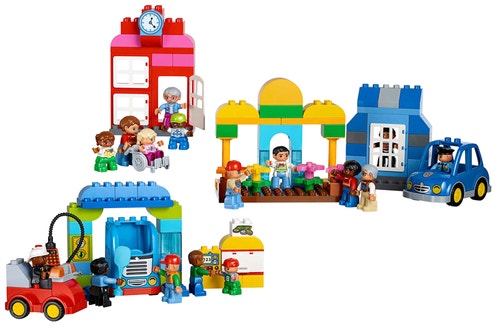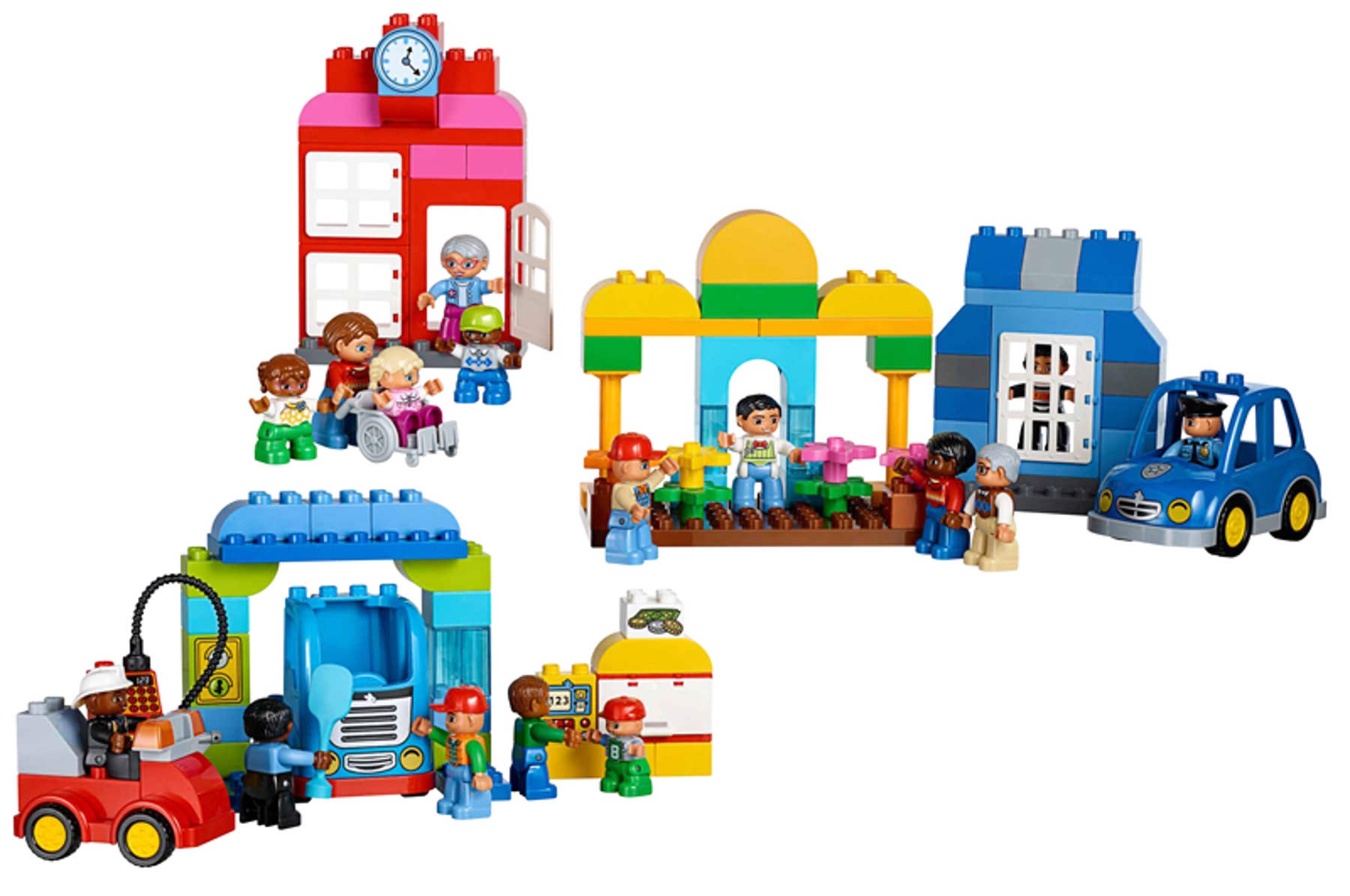My Home
To learn and understand characteristics of a home, and what similarities and differences there might be from home to home.

Connect
Tell the children they are going to build a home. Discuss that a home is a place where people (and sometimes, their pets) live. Talk about different types of homes (e.g., apartments, houses, mobile homes, group homes, etc.). Explain that homes provide shelter from the sun, rain, cold, heat, and wind. And that a home is a place where people store their food and belongings.
Discuss that a neighborhood is a group of homes and that people who live close to each other are called “neighbors.”
Show the photographs of the LEGO® DUPLO® models for Activity 2.

Consider asking questions like:
- What do you see?
- What is in your home?
- Why do people and pets live in homes instead of outside?
Construct
- Tell the children they are going to build homes and put them together to create a neighborhood.
- Divide the children into pairs.
- Tell the children to work together in their pairs to build a home. They can choose to build the inside or the outside of the home.
Contemplate
Create a space where the children can combine all of their models. Tell the children to put their models together to form a neighborhood. Consider asking questions like:
- What is your favorite place in your real home? Why?
- Did you build a special place in your LEGO DUPLO home? What would you like to add to your home?
- Which things in your home are the same as in other homes? Which things are different?
- Allow the children a few minutes to add new features to their homes.
Continue
Allow them time to role-play with LEGO DUPLO figures and vehicles. Encourage the children to visit their neighbors and to ask for tours of their homes.
교사 지원
Children will :
Begin to understand what makes a home.
For up to 12 children.
Children are able to identify common parts of a home even though homes are different.




